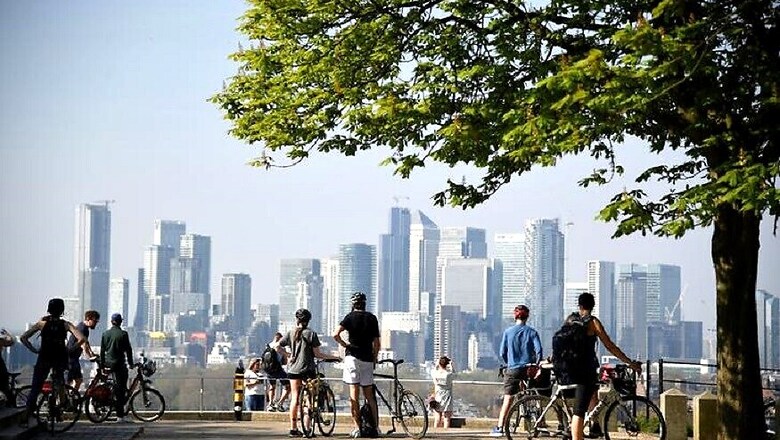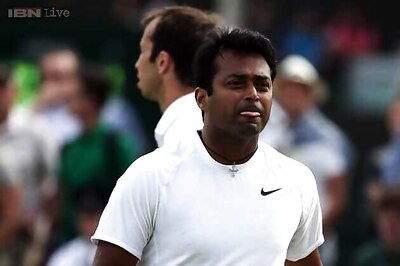
views
London: On April 2, a wireless tower was set ablaze in Birmingham. The next day, a fire was reported at 10 p.m. at a telecommunications box in Liverpool. An hour later, an emergency call came in about another cell tower in Liverpool that was going up in flames.
Across Britain, more than 30 acts of arson and vandalism have taken place against wireless towers and other telecom gear this month, according to police reports and a telecom trade group. In roughly 80 other incidents in the country, telecom technicians have been harassed on the job.
The attacks were fueled by the same cause, government officials said: an internet conspiracy theory that links the spread of the coronavirus to an ultrafast wireless technology known as 5G. Under the false idea, which has gained momentum in Facebook groups, WhatsApp messages and YouTube videos, radio waves sent by 5G technology are causing small changes to people’s bodies that make them succumb to the virus.
The incidents starkly demonstrate how coronavirus conspiracy theories have taken a dark turn by spilling out into the real world. In just a few weeks, the pandemic has given pre-existing fringe ideas online new urgency by playing on people’s fears.
Before the coronavirus, rarely did such theories cause as much tangible harm so quickly, disinformation researchers said.
In the United States, one person died after self-medicating with chloroquine, which was touted online as a miracle cure for the coronavirus even though its efficacy is unproven. And Dr. Anthony Fauci, the head of the U.S. National Institute of Allergy and Infectious Diseases, was assigned more security this month after unfounded theories spread that he was part of a secret cabal working to undermine President Donald Trump.
“Most conspiracies stay online, but this is having real-world impact,” said Alexandre Alaphilippe, executive director of the EU DisinfoLab, a Brussels-based group tracking virus conspiracy theories. He called managing pandemic misinformation “a new problem” because the disease is global and people everywhere are hunting for information.
The false theory linking 5G to the coronavirus has been especially prominent, amplified by celebrities like John Cusack and Woody Harrelson on social media. It has also been stoked by a vocal anti-5G contingent, who have urged people to take action against telecom gear to protect themselves.
The idea has deep internet roots. An analysis by The New York Times found 487 Facebook communities, 84 Instagram accounts, 52 Twitter accounts, and dozens of other posts and videos pushing the conspiracy. The Facebook communities added nearly half a million new followers over the past two weeks. On Instagram, a network of 40 accounts nearly doubled its audience this month to 58,800 followers.
On YouTube, the 10 most popular 5G coronavirus conspiracy videos posted in March were viewed over 5.8 million times. Today, the conspiracy can be found on Facebook in over 30 countries, including Switzerland, Uruguay and Japan.
British politicians said the conspiracy theory and the violent acts it was causing were unacceptable.
“This is nonsense of the absolute highest order,” said Julian Knight, a member of Parliament who leads a committee investigating coronavirus-related online misinformation. He said Facebook and YouTube needed to “get a grip” on the situation or risk undermining the crisis response.
Knight added that the spread of 5G conspiracies raised alarms about how information about a future coronavirus vaccine would be disseminated.
“If we were to get a vaccine for COVID-19, can we trust the social media companies to ensure that the right public health messages are put out about that vaccine?” he asked. “That could be a question of life and death for many people.”
Facebook, which also owns Instagram and WhatsApp, said it was “starting to remove false claims that 5G technology causes the symptoms of or contraction of COVID-19.” YouTube said it would reduce recommendations of videos linking the coronavirus to 5G, while Twitter said it had taken action against misleading and harmful content about the illness.
Wild claims about 5G are not new. The technology has an outsize political importance because it may provide countries with a competitive edge, with faster wireless speeds enabling more rapid development of driverless cars and other innovations.
Internet trolls have seized on 5G and its political implications to sow fear, leading to protests in the United States and elsewhere against the technology in recent years. Russians have pushed claims that 5G signals were linked to brain cancer, infertility, autism, heart tumors and Alzheimer’s disease, all of which lacked scientific support.
Telecommunications companies, which have added more security and are working with law enforcement, said the attacks against their workers and equipment had been widespread, threatening communication networks during the crisis. Vodafone said it had experienced at least 15 incidents, while BT has had at least 11. The companies said that in many cases, vandals had damaged existing infrastructure and not new 5G gear.
Police in Belfast, Liverpool and Birmingham said they were continuing to investigate the incidents, reviewing security-camera footage and asking the public for leads.
Anti-5G groups have continued adding hundreds of members. One Facebook user shared photos this week of a wireless tower being constructed in an unidentified area of Britain.
“Light it up,” one commenter responded.
Adam Satariano and Davey Alba c.2020 The New York Times Company




















Comments
0 comment